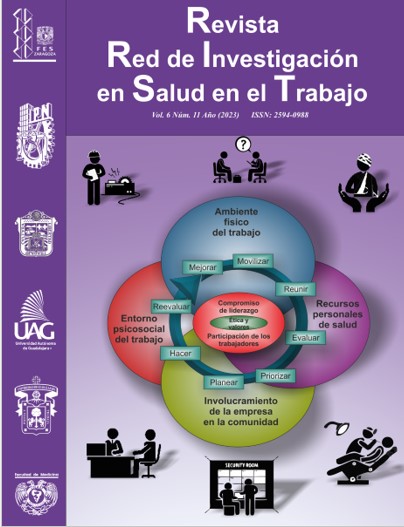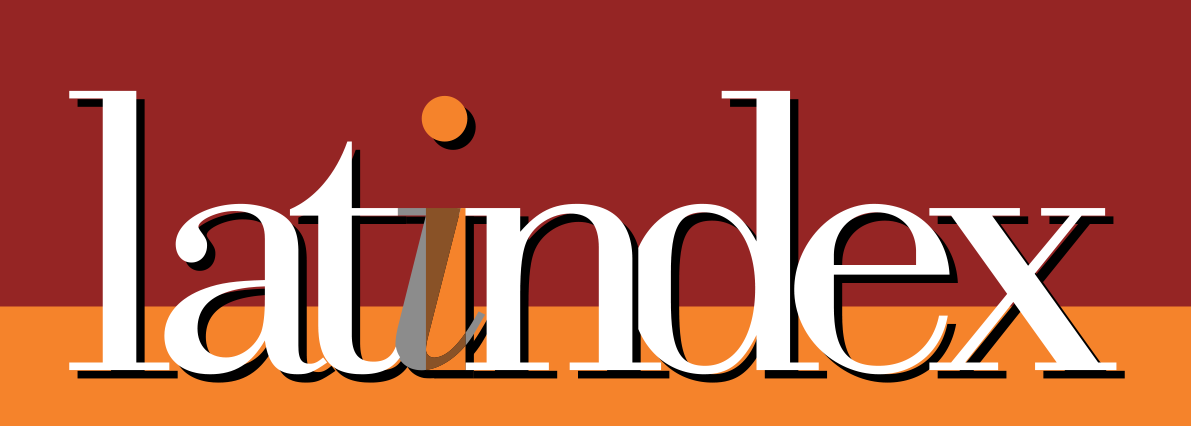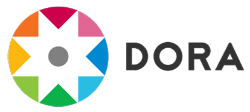Respiratory disorders in hairdressers and their associated causes / Afecciones respiratorias en estilistas y sus causas asociadas
Resumen
Objective: The objective of this study was to conduct a review of scientific studies on the presence of respiratory conditions in hairdressers and associated causes.
Method: Document review, by searching for scientific studies published in databases, according to keywords, from 2003 to date.
Results: With predominantly observational descriptive research design, studies were found in stylists, which show the prevalence of respiratory conditions (rhinitis and occupational asthma) associated with exposure to chemical agents, such as persulfate, contained in the products they use their daily in work activity. None of them were conducted in Mexico.
Discussion and conclusions: The bibliography consulted confirms the presence of respiratory pathology associated with exposure to chemical agents in the workplace of stylists. This underlines the importance of conducting similar studies in our country, which can contribute to the implementation of preventive measures for these workers.
##plugins.generic.usageStats.downloads##
Citas
Brisman, J., Albin, M., Rylander, L., Mikoczy, Z., Lillienberg, L., Dahlman Ho¨glund, A., . . . Nielsen, J. (2003). The Incidence of Respiratory Symptoms in Female Swedish Hairdressers. AMERICAN JOURNAL OF INDUSTRIAL MEDICINE, 44, 673-678. doi:DOI10.1002/ajim.10293.
Facultad de química [UNAM]. (s/f). Hoja de datos de seguridad de sustancias químicas, Amoniaco. https://quimica.unam.mx/proteccion-civil-facultad-quimica/hojas-de-seguridad/
Foss Skiftesvik, M. H., Winther, L., Mosbech, H. F., Skov, P. S., Opstrup, M. S., Søsted, H., . . . Johnsen, C. R. (2016). Optimizing diagnostic tests for persulphate-induced respiratory diseaseS. Clinical and Translational AllergY, 6, 1-10. doi:DOI 10.1186/s13601-016-0118-7
Foss Skiftesvik, M., Winther, L., Jonhsen, C. R., Zachariae, C., & Johansen, J. D. (2017). Incidence of skin and respiratory diseases among Danish hairdressing apprentices. Contact Dermatitis, 1-7. doi: doi:10.1111/cod.12744
Hassan, O., & Bayomy, H. (2015). Occupational Respiratory and Musculoskeletal Symptoms among Egyptian Female Hairdressers. Community Health, 40, 670–679. doi:DOI 10.1007/s10900-014-9983-y
Hiller, J., Greiner, A., & Drexler, H. (2022). Respiratory afictions during hairdressing jobs: case history and clinical evaluation of a large symptomatic case series. Journal of Occupational Medicine and Toxicology, 1-11. doi:https://doi.org/10.1186/s12995-022-00351-5
Hovmand Lysdal, S., Mosbech, H., Duus Johansen, J., & Søsted, H. (2014). Asthma and Respiratory Symptoms Among Hairdressers in Denmark: Results from a Register Based Questionnaire Study. AMERICAN JOURNAL OF INDUSTRIAL MEDICINE, 1368–1376. doi:DOI10.1002/ajim.22390.Published online 28 October 2014 inWiley Online Library
Kleniewska, A., Wiszniewska, M., Krawczyk-Szulc, P., Nowakowska-Świrta, E., & Walusiak-Skorupa, J. (2016). Anaphylactic reaction in a hairdresser due to sensitization to persulphates. Occupational Medicine, 584-585. doi: doi:10.1093/occmed/kqw037
Kronholm Diab, K., Jönsson, B., Axmon, A., & Nielsen, J. (2014). Work-related airway symptoms, nasal reactivity and health-related quality of life in female hairdressers: a follow-up study during exposure. Int Arch Occup Environ Health, 87, 61-71. doi:10.1007/s00420-012-0835-8
Meyer. (2018). Persulfato de amonio. Hoja de datos de seguridad, persulfato de amonio.
Meyer. (2018). Persulfato de potasio. Hoja de datos de seguridad, persulfato de potasio.
Meyer. (2018). Persulfato de sodio. Hoja de datos de seguridad de persulfatos de sodio.
Moscato, G., Pala, G., Perfetti, L., Frascaroli, M., & Pignatti, P. (2010). Clinical and inflammatory features of occupational asthma caused by persulphate salts in comparison with asthma associated with occupational rhinitis. Allergy, 65, 784-790.
Moscato, G., Pignatti, P., Yacoub, M. R., Canzio, R., Spezia, S., & Perfetti, L. (2005). Occupational Asthma and Occupational Rhinitis in Hairdressers. CHEST, 128, 3590-3598.
Moscato, G., Vandenplas, O., Gerth Van Wijk, R., Malo, J. L., Quirce, S., Walusiak, J., . . . Siracusa, A. (2008). Occupational rhinitis. Allergy, 63, 969-980. doi:DOI: 10.1111/j.1398-9995.2008.01801.x
Motato Carvajal, M. (2010). Exposición química y síntomas relacionados en estilistas del sector informal de palmira valle 2020. [Tesis de grado, Universidad del valle].
Nielsen, J., Nilsson, P., Dahlman-Höglund, A., Kronholm Diab, K., Albin, M., Kåredal, M., . . . Gudmundsson, A. (2016). Dust-free bleaching powder may not prevent symptoms in hairdressers with bleaching-associated rhinitis. Journal of Occupational Health, 58, 470-476. doi:doi: 10.1539/joh.16-0073-OA
Pexe, M., Marcante, A., Santos Luz, M., Manzani Fernandes, P., Chiaravalloti Neto, F., Sayuri Sato, A. y Kaneshiro Olympio, K. (2019). Hairdressers are exposed to high concentrations of formaldehyde during the hair straightening procedure. Environmental Science and Pollution Research. doi:https://doi.org/10.1007/s11356-019-05402-9
Piapan, L., Baldo, J. by Larese Filon, F. (2019). Occupation-Related Symptoms in Hairdressers. DERMATITIS, 30, 142-149. doi:10.1097/DER.0000000000000450
Uter, W., Johansen , J. D., Macan, J., Symanzik, C., & John, S. M. (2023, April 12). Diagnostics and Prevention of Occupational Allergy in Hairdressers. Current Allergy and Asthma Reports, 23, 267-275. doi:https://doi.org/10.1007/s11882-023-01076-z
World Health Organization and International Labour Organization. (2021). GLOBAL MONIRORING REPORT WHO/ILO Join Estimates of the Work-related Burden of Disease and Injury, 2000-2016. WHO/ILO.

Esta obra está bajo licencia internacional Creative Commons Reconocimiento-NoComercial-CompartirIgual 4.0.
Al proponer un trabajo para su publicación, los autores aceptan las condiciones contenidas en las presentes normas de la revista Red de Investigación en Salud en el Trabajo y conservan los derechos patrimoniales sobre el artículo en cuestión, a fin de que ésta lo edite, publique, reproduzca, difunda, comercialice, traduzca o autorice su traducción a cualquier idioma.
Los artículos aceptados serán publicados en la revista Red de Investigación en Salud en el Trabajo bajo una licencia de Creative Commons Reconocimiento-NoComercial-CompartirIgual 4.0 Internacional.
Los trabajos propuestos deberán ser originales e inéditos, y no podrán presentarse a ninguna otra revista mientras se encuentren sometidos a la consideración de la revista Red de Investigación en Salud en el Trabajo. También se reciben trabajos completos publicados previamente en forma de resumen, o trabajos no publicados presentados en congresos o seminarios.
Todos los trabajos serán publicados con pleno conocimiento de los autores.
Los artículos firmados son responsabilidad de los autores y no necesariamente reflejan la opinión de la revista, o de la institución a la que están afiliados los autores.















